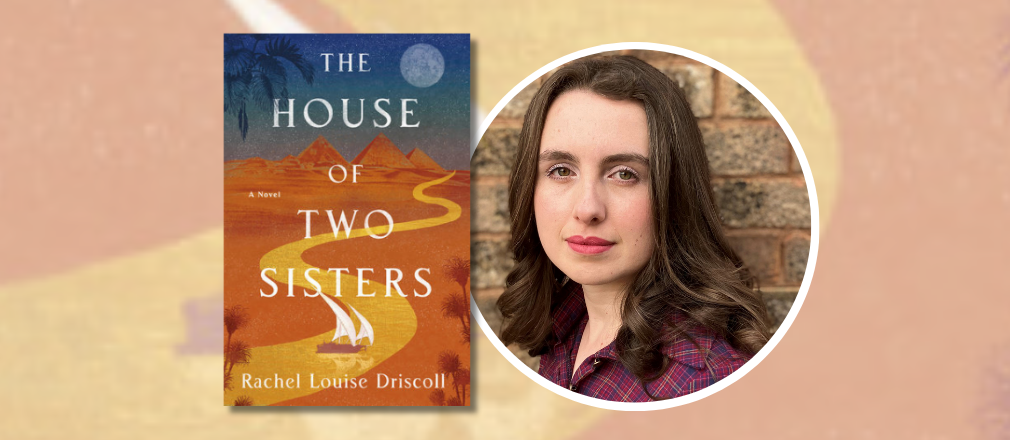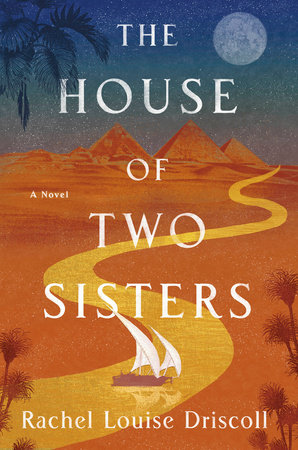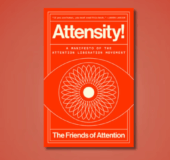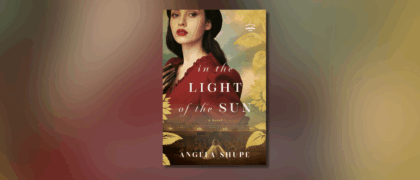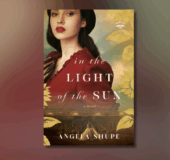Dear Librarians,
I started writing my debut novel The House of Two Sisters when I was working at Plymouth University Library in the UK. This was such a useful role as I set out to research both the Ancient Egyptians and the Victorian Era, and sought to marry both time periods in my Gothic mystery. It was incredible to have access to a wide range of fantastic resources, both physical and digital, and I appreciated what a help this was to me throughout the plotting and writing. In fact, the idea to write this book first came to me on a shift in the library. It was during the pandemic and things were quieter than normal, so whilst I was covering reception, I used the opportunity to read some articles on the computer, only to discover an account of Victorian mummy unwrapping parties. I knew at once that I would address this macabre practice in a novel, and set out to plot my story.
Whilst I no longer work at the library, I have fond memories of shelving books and spying accounts of Egyptian mythology, piling them on my book trolley, and then heading to the self-service machine to check them out. Libraries have always been a large part of my life, stretching back to when I was a child and, too short to reach the counter, I remember being lifted to sit on the reception desk whilst I proudly signed my name (in large, childish letters) on my first library card. As such, it’s very exciting for me to present my debut novel to you.
The House of Two Sisters tells the story of a British Victorian Egyptologist called Clemmie who arrives in Egypt on a secret mission whilst being haunted by the myth of the goddess Nephthys. I really enjoyed being able to blend all of my favourite things – Gothic Victoriana, mythology, vivid settings, and rich historical detail – into this book.
Love for Egyptology reached new heights in the 19th century. The Rosetta Stone arrived at the British Museum, the hieroglyphs were deciphered, Amelia Edwards published a book about her journey in Egypt entitled A Thousand Miles up the Nile, and in the wake of these events, Clemmie sets off on her own secret and perilous quest, plagued by her tragic past.
My childhood experience of handling a mummified cat in the Plymouth Museum, just across from the library where I later ended up working, sparked my own interest in Ancient Egypt. Clemmie’s experiences are just as tactile as she begins the book assisting her father with his Egyptian relic parties. As I studied the Egyptian myths, it became clear to me that the goddess Nephthys’s story linked brilliantly with Clemmie’s, both of them underappreciated yet vital to their families.
The House of Two Sisters explores the murky morality of antiquity dealing in the gloriously hot and dusty setting of 19th-century Egypt, where snakes and crocodiles are the least of Clemmie’s worries as she attempts to save herself and what’s left of her home. A Gothic journey into the world of Egyptomania, it’s a story of myths retold, voyages of heart and body, the complications of family, secrets, and love, and the repercussions of our actions.
I want to thank you for your support in sharing my debut novel with readers, and I look forward to seeing this story appeal to fans of adventure, historical novels, myth retellings, Gothic mysteries, romance, and also any crime and thriller lovers out there. In The House of Two Sisters, I invite readers to join Clemmie on her journey up the Nile, so grab your palm leaf hat, some lemonade, and step aboard the dahabeeyah to discover what adventures await her.
Very best wishes,
Rachel Louise Driscoll

